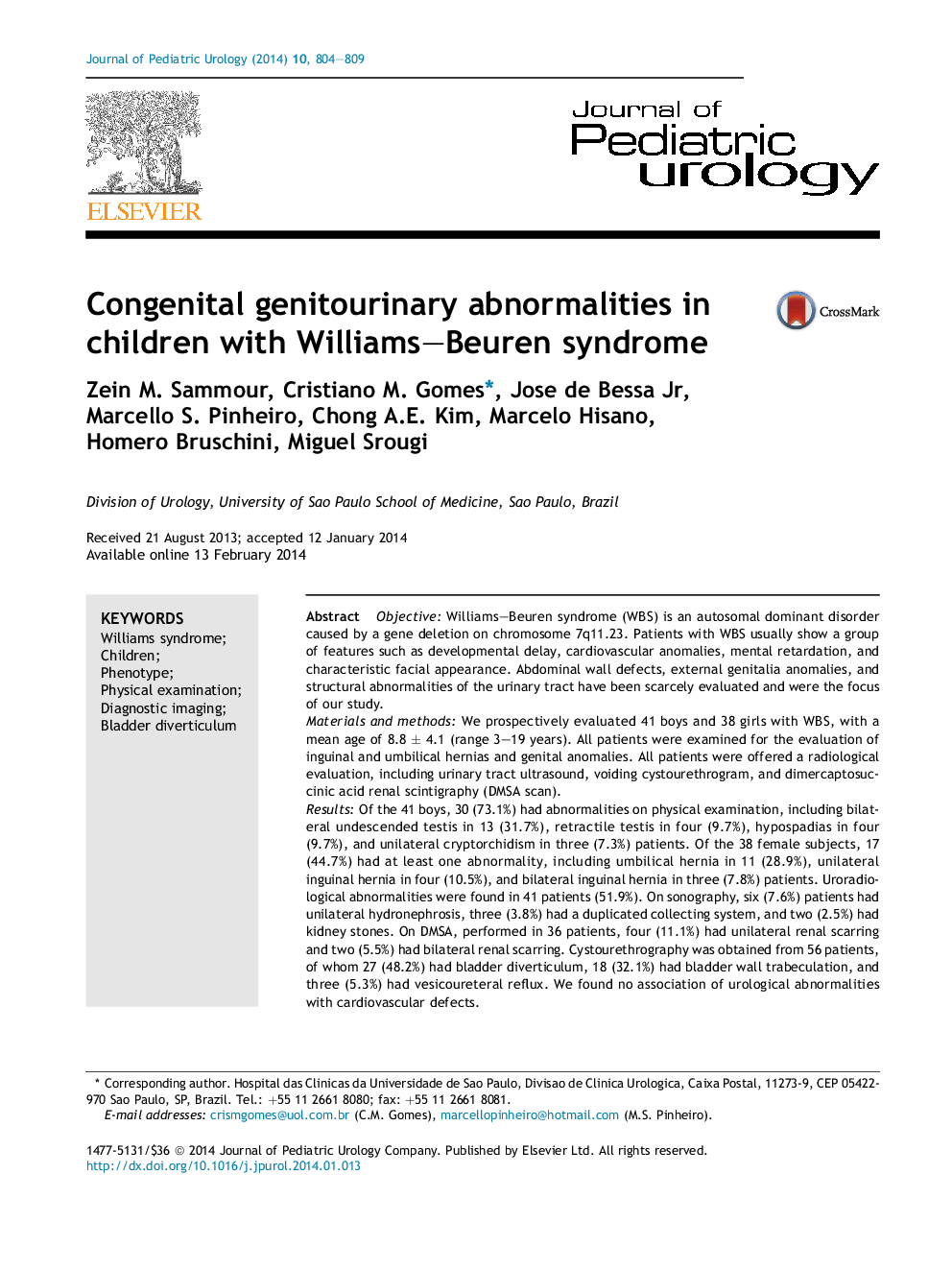| Article ID | Journal | Published Year | Pages | File Type |
|---|---|---|---|---|
| 4162343 | Journal of Pediatric Urology | 2014 | 6 Pages |
ObjectiveWilliams–Beuren syndrome (WBS) is an autosomal dominant disorder caused by a gene deletion on chromosome 7q11.23. Patients with WBS usually show a group of features such as developmental delay, cardiovascular anomalies, mental retardation, and characteristic facial appearance. Abdominal wall defects, external genitalia anomalies, and structural abnormalities of the urinary tract have been scarcely evaluated and were the focus of our study.Materials and methodsWe prospectively evaluated 41 boys and 38 girls with WBS, with a mean age of 8.8 ± 4.1 (range 3–19 years). All patients were examined for the evaluation of inguinal and umbilical hernias and genital anomalies. All patients were offered a radiological evaluation, including urinary tract ultrasound, voiding cystourethrogram, and dimercaptosuccinic acid renal scintigraphy (DMSA scan).ResultsOf the 41 boys, 30 (73.1%) had abnormalities on physical examination, including bilateral undescended testis in 13 (31.7%), retractile testis in four (9.7%), hypospadias in four (9.7%), and unilateral cryptorchidism in three (7.3%) patients. Of the 38 female subjects, 17 (44.7%) had at least one abnormality, including umbilical hernia in 11 (28.9%), unilateral inguinal hernia in four (10.5%), and bilateral inguinal hernia in three (7.8%) patients. Uroradiological abnormalities were found in 41 patients (51.9%). On sonography, six (7.6%) patients had unilateral hydronephrosis, three (3.8%) had a duplicated collecting system, and two (2.5%) had kidney stones. On DMSA, performed in 36 patients, four (11.1%) had unilateral renal scarring and two (5.5%) had bilateral renal scarring. Cystourethrography was obtained from 56 patients, of whom 27 (48.2%) had bladder diverticulum, 18 (32.1%) had bladder wall trabeculation, and three (5.3%) had vesicoureteral reflux. We found no association of urological abnormalities with cardiovascular defects.ConclusionsPatients with WBS have a high prevalence of abdominal wall, external genitalia, and urological abnormalities, emphasizing the importance of proper physical examination and radiological investigation in this population.
